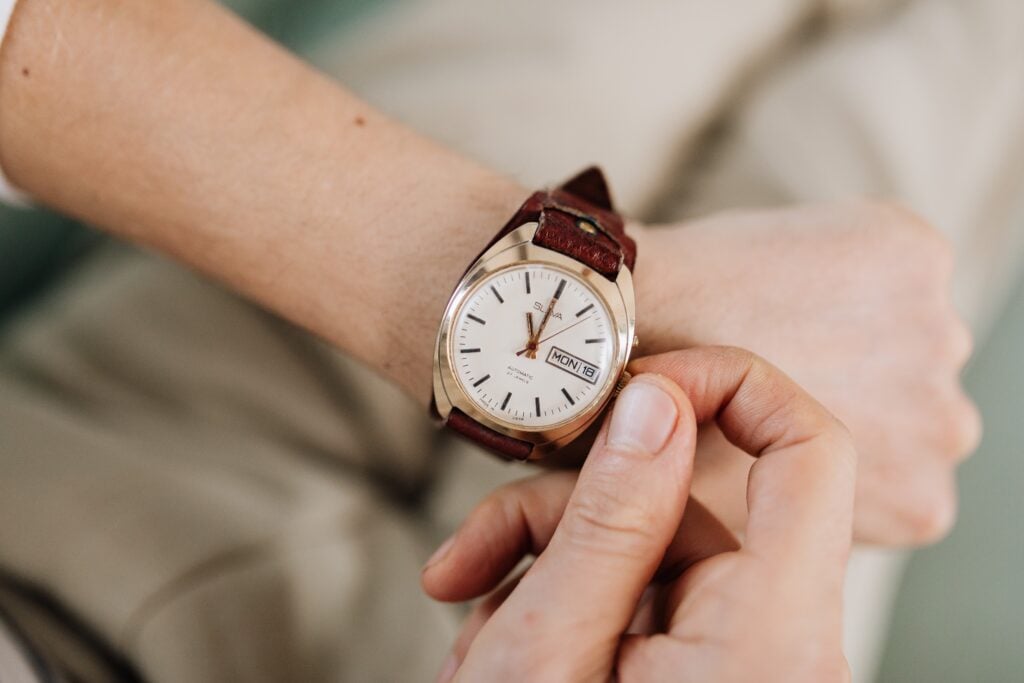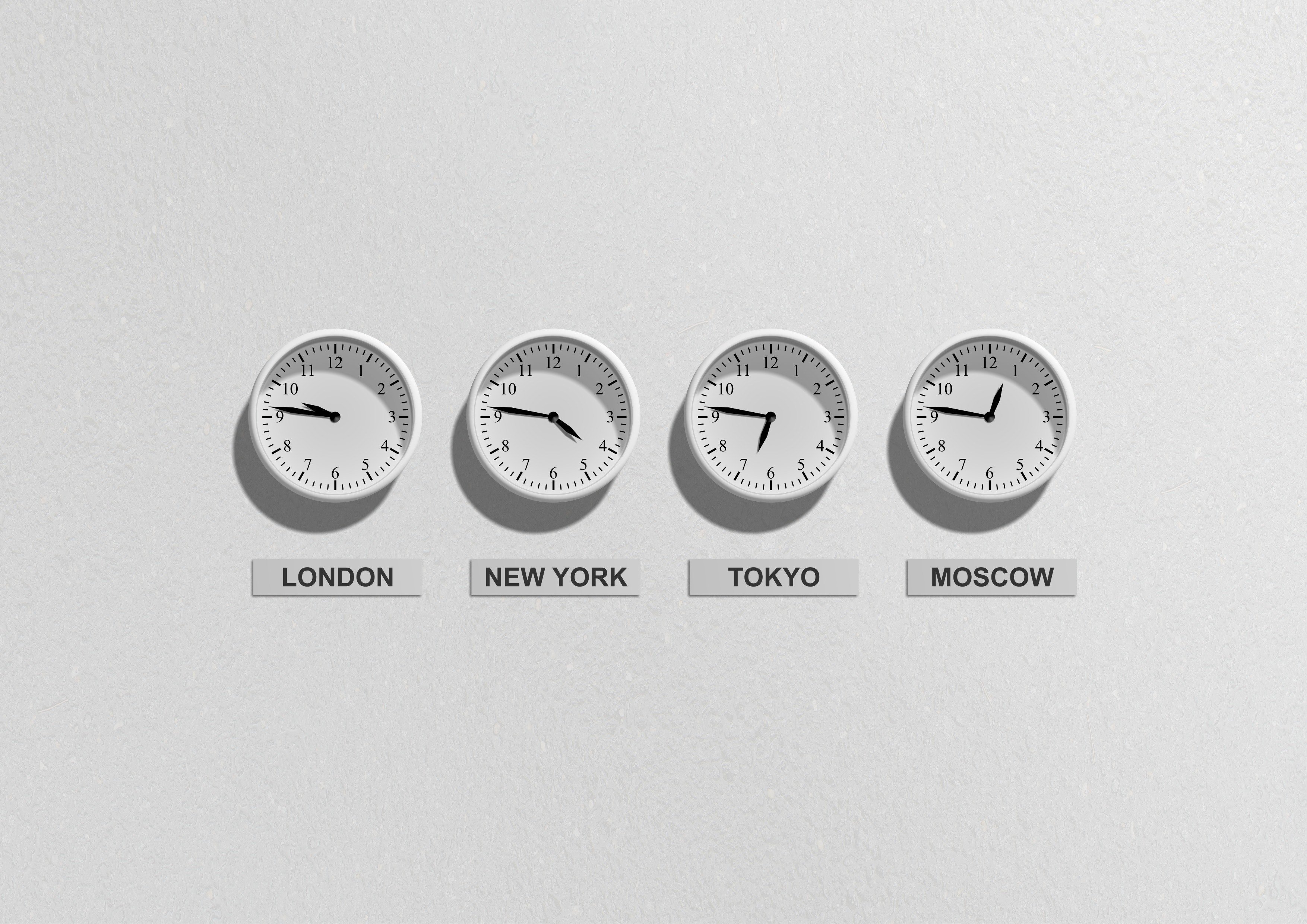It’s that time of year already! The clocks move forward this Sunday, which means the days are getting longer and summer is on the horizon. But for those of us with non-digital watches, it’s important that you know how to adjust your watch to fit the correct hour. Moreover, it’s even more important to know how to do this without inadvertently damaging the inner mechanism of your timepiece. In today’s blog post, we will explain how to change the time on an automatic or a quartz model.
Daylight Saving Time and How it Works
In the U.K., the clocks go forward by an hour on the last Sunday in March each year. This occurs at 1 o’clock in the morning. Meaning that as the clock strikes 1:00 am, the time jumps to 2:00 am.
This shift takes us from the GMT (Greenwich Mean Time) timezone to BST (British Summer Time), also known as Daylight Saving Time. Essentially, we ‘lose’ an hour of night-time that we will regain when the clocks go backwards again in October.
Although it seems confusing, Daylight Saving Time just ensures that we are making the most of the daylight.
Before Changing the Time on a Watch for Daylight Saving Time
So, now that we know when and why we have Daylight Saving Time, we should know how to prepare for it. Changing the time on your watch involves some care to ensure that its inner workings remain undisrupted. Otherwise, in some circumstances, you can end up breaking your watch by not following proper instructions when adjusting the time. Here are some steps to take before you start the process.
Check the power source. Before you do anything, you should ensure that your watch has enough power. For instance, if you haven’t changed the battery in your quartz watch in the last couple of years, you should replace it. For automatic or self-winding watches, it’s important that they are worn recently as they are powered by the wearer’s movement.
Consult the user manual. If possible, before you begin it’s also advisable to have the user manual for your watch to hand. As this is only a general guide, the manual will be handy for any model-specific problems you may encounter. For many brands, you will be able to find this manual online if you no longer have a physical copy. Longines, for instance, have a list of theirs here.
Ensure you have a digital clock with the correct time to reference. This one is fairly self-explanatory. A smartphone, television, or radio-controlled clock will be helpful to serve as a reliable reference when adjusting your watch. If you don’t have another clock to hand, you can alternatively consult https://time.is/ for a very accurate reading.
Do not adjust it between the hours of 8 pm and 3 am. Changing the date and time within this window can severely damage your watch. This is because, between these hours, the gears are usually in motion. By forcing a manual motion upon the mechanism, you can easily chip a gear which will permanently alter the way the movement operates. As a general rule of thumb, make sure the hands are in the lower half of the dial beforehand.

Step by Step Guide on How to Change the Time on an Automatic or Quartz Watch
For automatic and quartz watches with no date display, you will only need to adjust the time. If this applies to you, follow these steps:
- Remove the watch from your wrist. Not only will this make the process far easier, but it also reduces the risk of damaging the inner mechanism. Fiddling with the crown at an awkward angle can put stress on the winding stem, consequently interfering with the internal components.
- Pull out the crown. To set the time, generally, you should pull the crown out to the furthermost position. This will stop the hands. Those with screw-down crowns will first need to unscrew the crown. Generally, watches with water resistances of 100 metres will be screw-down, but check your manual if unsure.
- Turn the crown clockwise (and clockwise only) to the correct hour. For watches currently set to GMT that need to be adjusted to BST, turn the crown until the watch is forward by an hour. If you’re looking at the watch face, clockwise will be the direction that is away from you. Do not turn it anti-clockwise, even if you over-wind past the correct time. In this instance, you should continue to wind clockwise until you reach the correct time again.
- Push and screw the crown back in. When you’re happy with the newly-set time, push and (if necessary) screw the crown back in until it’s watertight. This will resume the movement of the hands.
- All done! Welcome to British Summer Time.
Changing the Time and Date on a Date Display Watch
Models with a date display are slightly more complicated to alter. Analog watch dials usually only have a 12-hour display, rather than a full 24-hour one. When looking at the dial, it’s therefore difficult to determine whether the watch thinks the time is 5 am or 5 pm. As a result, the date display can easily be thrown out of sync.
As long as you don’t overshoot the hour change above, when adjusting your watch from GMT to BST the date should remain correct. However, if you accidentally wind past the correct time, a problem arises. In this instance, you will have to wind forwards another 12 hours, as you must not turn the crown anti-clockwise. But as a result, your date display will become incorrect, since the watch will be 12 hours ahead.
This will also be a problem when the clocks go back again on the last Sunday in October. To shift back from GMT to BST, you will have to wind 11 hours forwards to reach the correct time. Therefore, for date display watches some extra steps are necessary.
Between steps one and two above, you will need to take the following steps:
- Adjust the date to yesterday’s date. It’s imperative that you only do this outside of the dangerous time window (8 pm-3 am). On most models, this involves pulling the crown to the first position, rather than the last which sets the time. However, it’s worth checking this in the manual for your specific model.
- Pull the crown to the time-setting position. This is usually the furthermost point.
- Turn the crown clockwise until you hit today’s date. The date should change to the correct one when you pass midnight
- Proceed to set the correct time, as in Step 2 above. If you’re setting your watch to any time past 12 pm, ensure that you wind a full 12-hour circle first. This will ensure that you’re setting the time to a PM hour, rather than AM.
- Continue as normal with Step 4.
Completion of the process above should ensure that both your date and time are now set correctly. However, if in any doubt, consult your manual, or even the manufacturer for any significant complications.
That concludes our step-by-step guide on how to change the time on a watch. With longer and lighter days on the way, we wish you a very happy British Summer Time! If you found this guide helpful, we’d love to know in the comments below.





